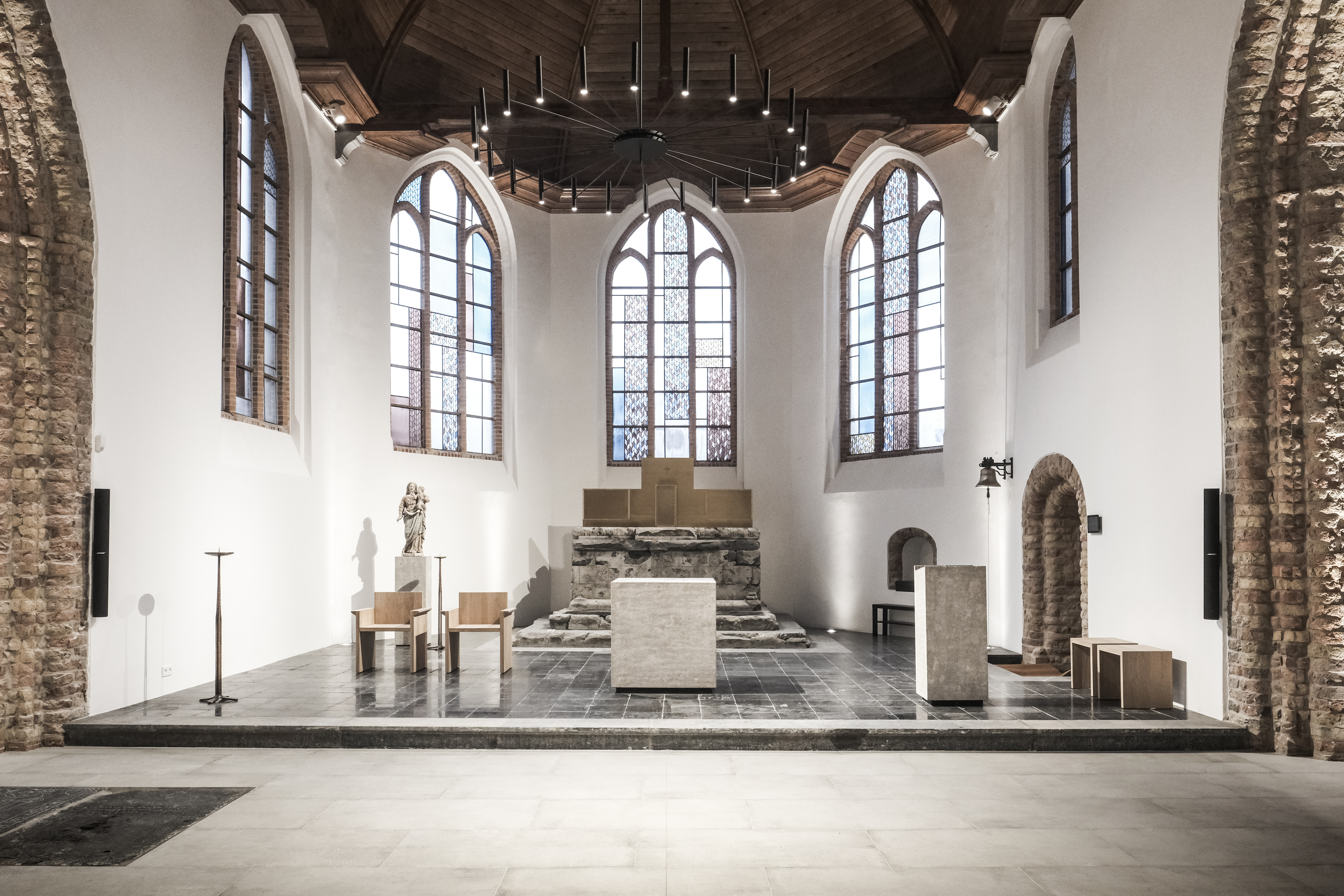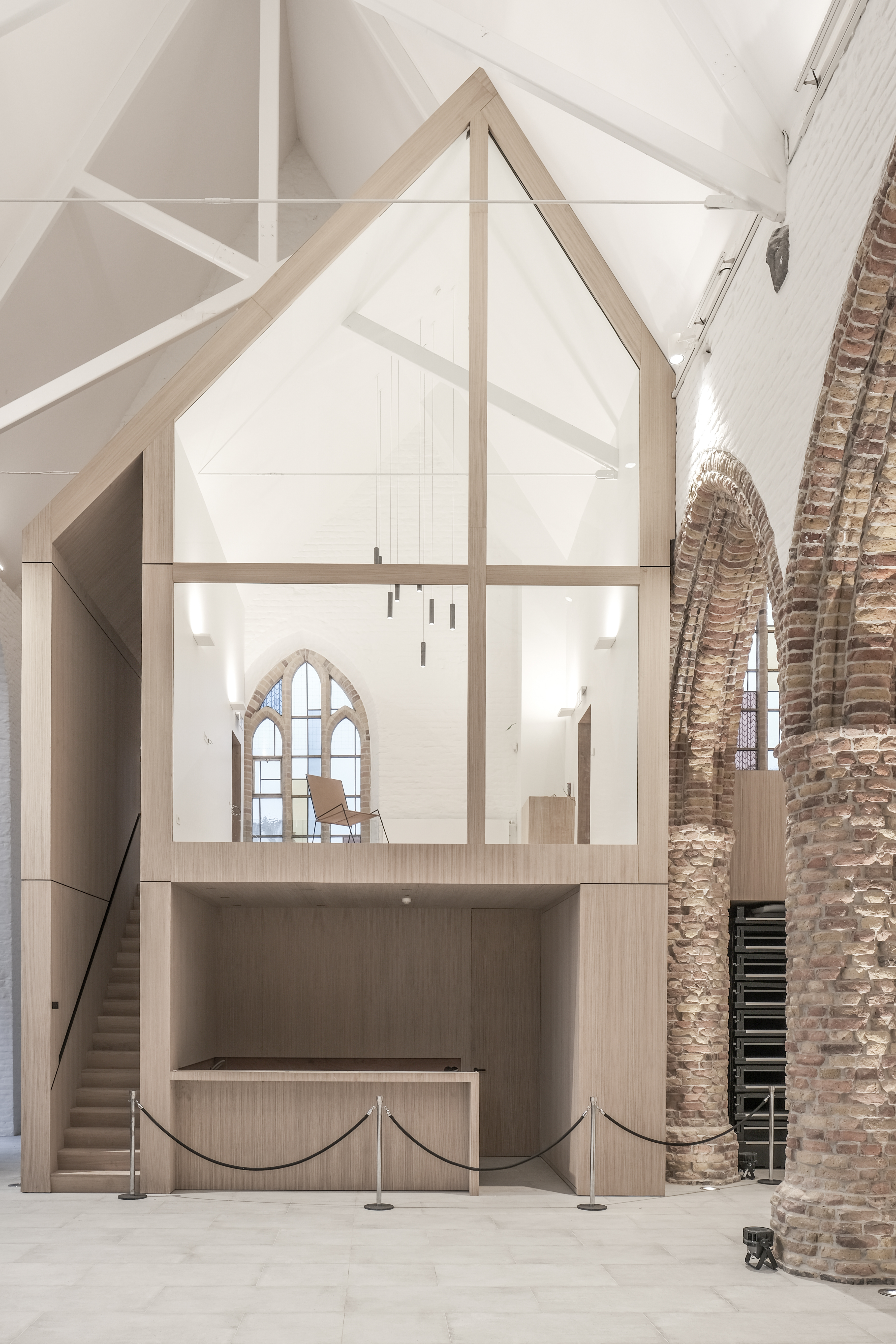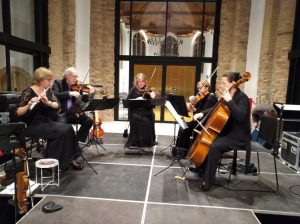
After the unfortunate blaze that destroyed the building seven years ago, a renewed church of Westkapelle in West Flanders was inaugurated last year on the Feast of Saint Nicolas, patron saint of the church. The restoration of St Nicolas’s Church, or Sint-Niklaaskerk in Flemish, became a project of transformation, respecting both living heritage and the material fabric that survived the fire.
Disaster struck in Westkapelle on 26 March 2013, days before Easter. Works on the roof were ongoing when the destructive fire started. Belgian newspapers last year noticed these and other similarities between Notre Dame in Paris and St Nicolas in Westkapelle. Both are Gothic churches roughly dating from the same period, and in both cases, the central spire came burning down. But unfortunately, the roofs and interior of Saint Nicolas’ Church in Westkapelle were completely lost in the blaze.
Dating back to the twelfth century, Saint Nicolas’ Church was at the heart of the local community. Not only as the historic landmark in the middle of town, but also as its spiritual centre and spot of social and cultural life. The fire not only destroyed a historic building, it devastated the heart of the town. The local Council of Knokke-Heist, owners of the building, envisioned an adapted rebuilding, nevertheless not a comprehensive redesign for adaptive reuse. The town still has a living religious community using the church for its services, however, the way in which this place of worship is used has changed since it was first built in the twelfth century. In addition, an extended use of the church for social and cultural activities was anticipated. The restoration project of St Nicolas became a transformation.
 The most challenging aspects of this restoration project were how to adapt the building to contemporary needs yet respecting continuity of purpose and respecting the historical material fabric. Especially the preservation of the fire-damaged brickwork was challenging. In this restoration project, it was decided to preserve the external appearance of the building as well as the medieval brickwork of the interior, mostly the pillars, next to the living heritage aspects of continuity of religious practice. The Council of Knokke-Heist appointed Bressers Architects from Ghent, contractor of the project was Artes Group from Kruibeke. Restoration of the church could only start in 2018, due to insurance issues. The restoration took two years at a total cost of € 4.875.000.
The most challenging aspects of this restoration project were how to adapt the building to contemporary needs yet respecting continuity of purpose and respecting the historical material fabric. Especially the preservation of the fire-damaged brickwork was challenging. In this restoration project, it was decided to preserve the external appearance of the building as well as the medieval brickwork of the interior, mostly the pillars, next to the living heritage aspects of continuity of religious practice. The Council of Knokke-Heist appointed Bressers Architects from Ghent, contractor of the project was Artes Group from Kruibeke. Restoration of the church could only start in 2018, due to insurance issues. The restoration took two years at a total cost of € 4.875.000.
Externally, the church appears to be identical to the one before the fire. On closer inspection, the spire mounting the octagonal central tower has a modern roof covering with some openings. This new spire is the fifth reconstruction. The first spire was torched by the English in 1405 during the Hundred Years War, the second was struck by lightning in 1675. Being located close to the North Sea, the spire of St Nicolas’ Church had functioned as a beacon for fishermen and shippers. The heat of the fire had severely damaged the medieval brickwork of the octagon. Taking this into account, a modern lighter spire was installed. After dark LED lights illuminate the surroundings turning the spire into a beacon of light, continuing tradition in a contemporary way.
Entering the church it becomes clear how this building has changed. Nave and choir of the medieval hall church are divided by glass walls. Much of the historic fabric, such as the brickwork, was retained. Not restored but preserved as found after the destructive fire were the three Gothic Revival altars, retaining the memory of this tragic event. New liturgical furnishings in a minimalist modern style were placed in the church, including the altar, ambo and baptismal font. The brickwork of the pillars was injected with epoxy resin to avoid scaling. The battered appearance of the three altarpieces and the brick pillars was a deliberate decision. New stained glass windows were installed, made by contemporary artists. The interior space breaths rejuvenated continuation.
In the nave of the church, two box-in-box constructions were placed containing a bar and meeting rooms. In one of the aisles, the sanitary rooms and technical space was created at sublevel. An extendable stand for film or theatre performances was placed in the main nave. These interventions have altered the ways of how the church could be used, extended the possibilities of functions. Comfortable modern chairs were placed inside the church, to be used for religious services, concerts or plays performed in the building.
Inauguration of the renewed church took place last year on 6 December, a day widely celebrated across Belgium, and other parts of Europe, as Saint Nicolas’ Day. Children from the local school were the first to visit the renovated building. Later that day the church was re-dedicated in a service conducted by the bishop of Bruges, during which a relic of Saint Nicolas was placed in the new altar. And the local Council of Knokke-Heist celebrated this occasion with 300 litres of a specially ordered St Nicolas’ Beer. Some in the community, including the parish priest, called the restored church even more beautiful than the previous one. A true renaissance!
In its transformed presence, Saint Nicolas’ Church in Westkapelle is once again at the centre of the local community. As a beacon in the built environment, as a living place of worship and as a centre for social and cultural activities.
By Marcus van der Meulen
Cover photo, Public Domain. Photos 02 and 03, courtesy ISATIE Creative Studio. Photo 04, courtesy Council Knokke-Heist.





Follow us: